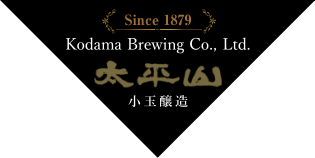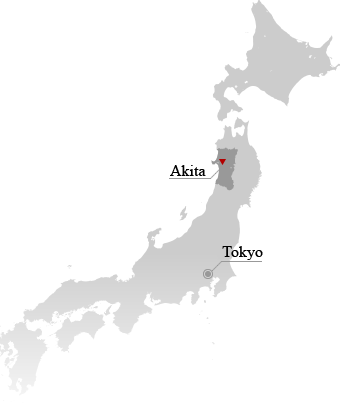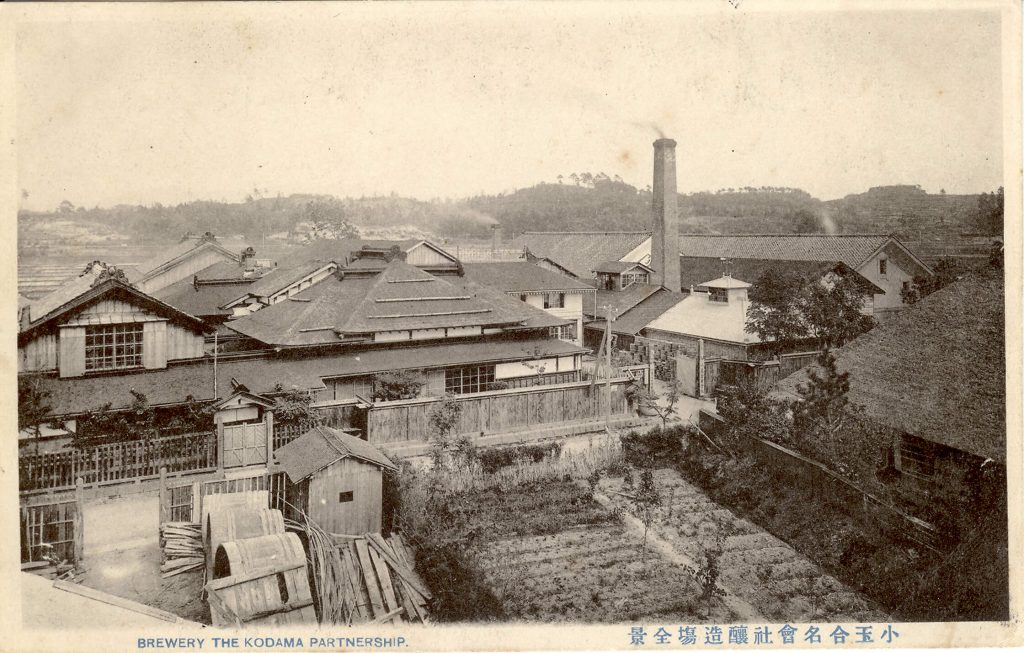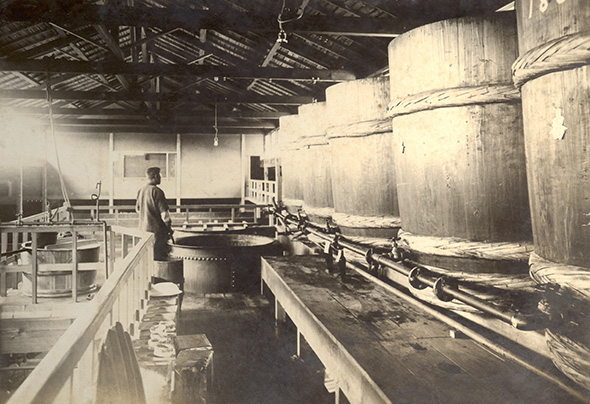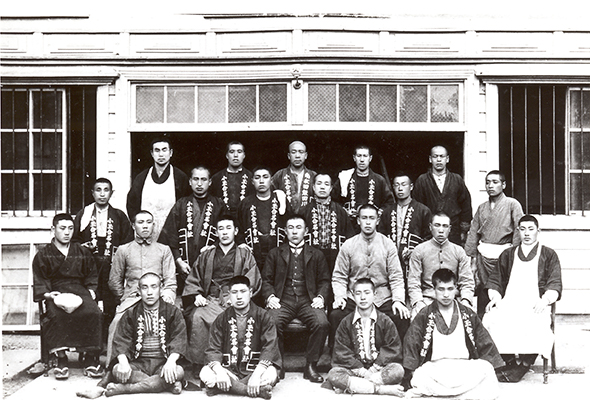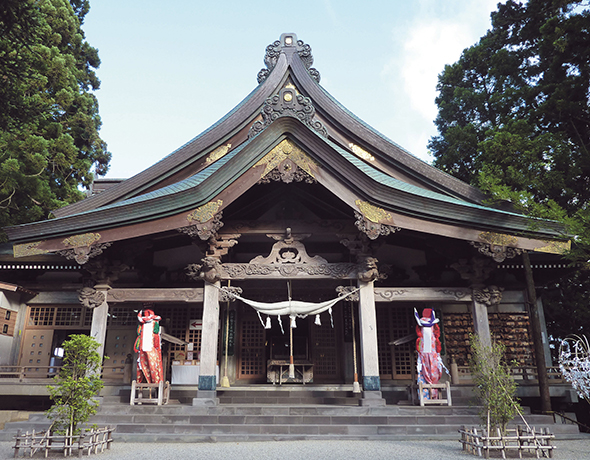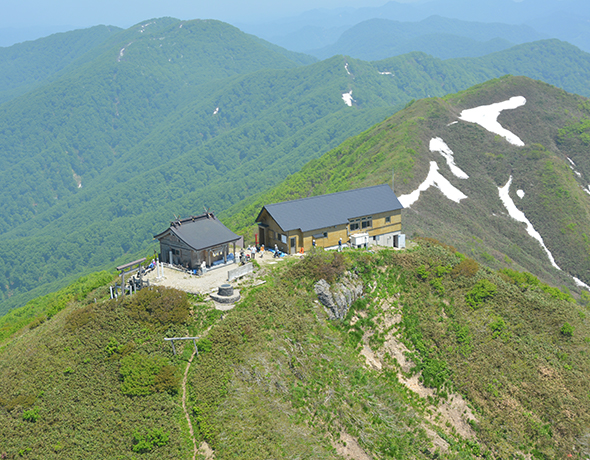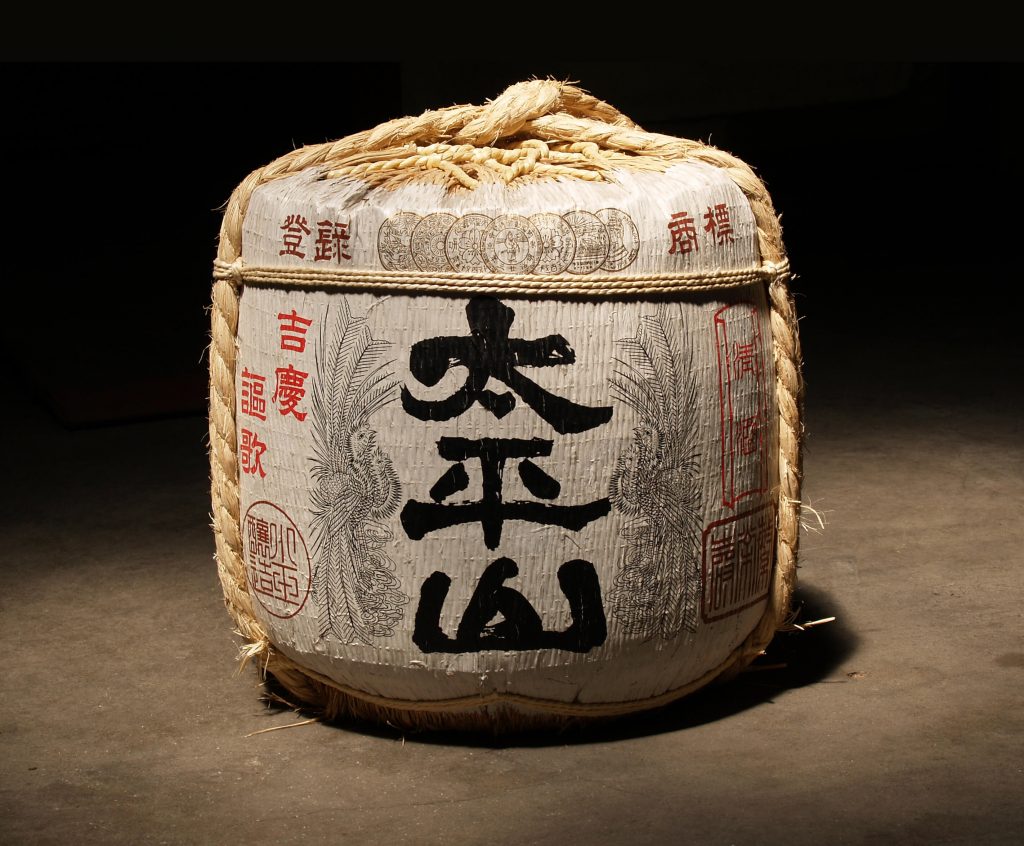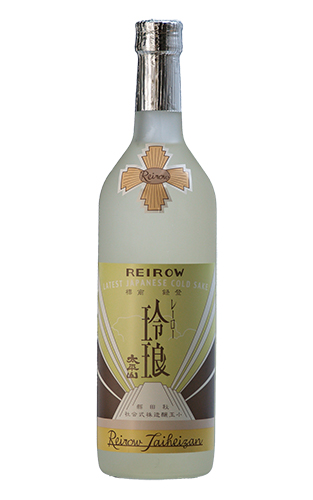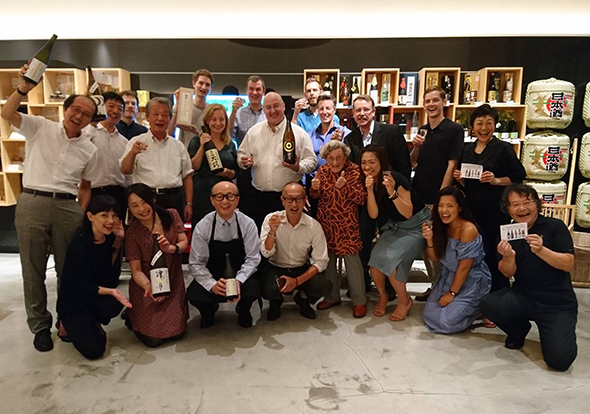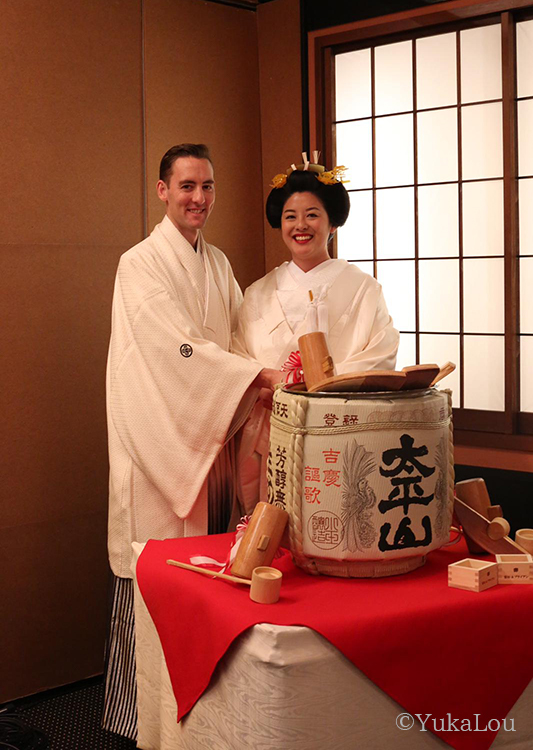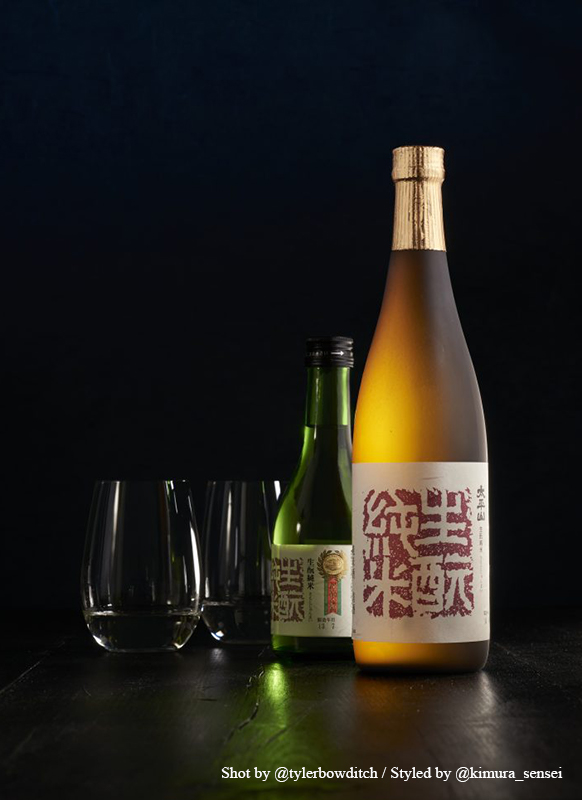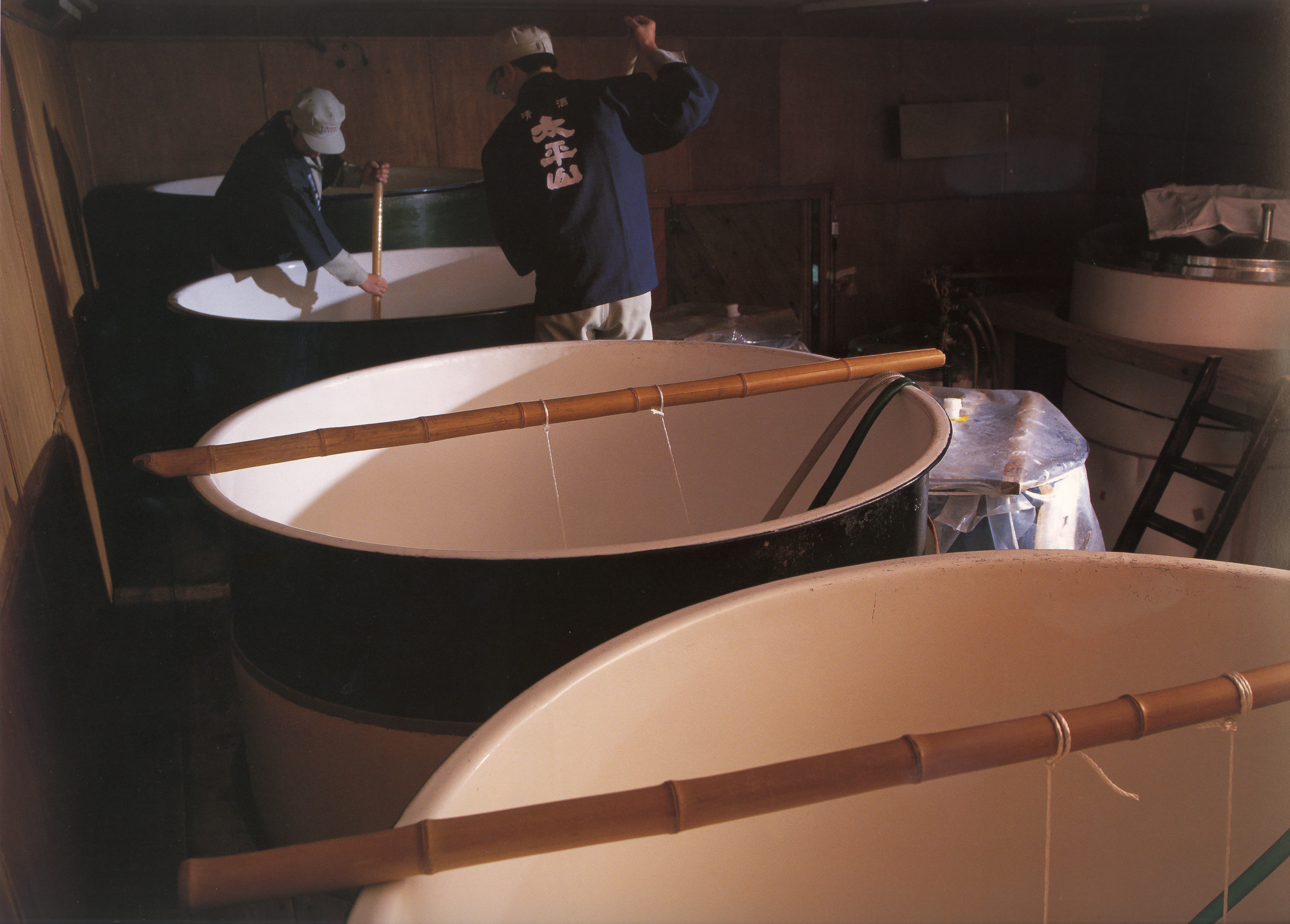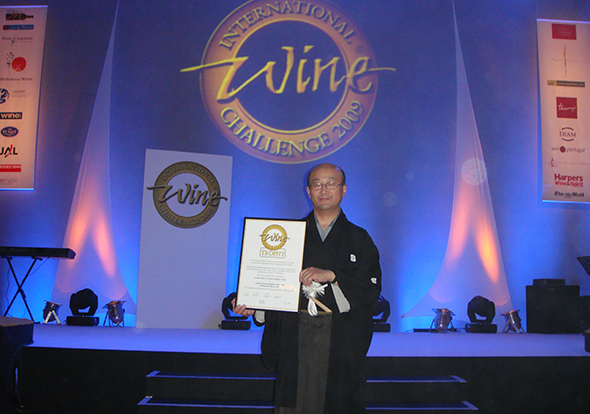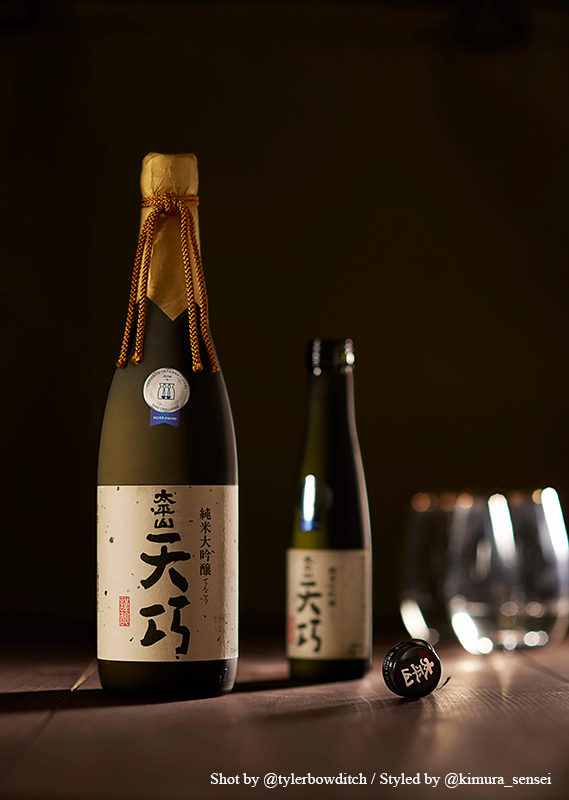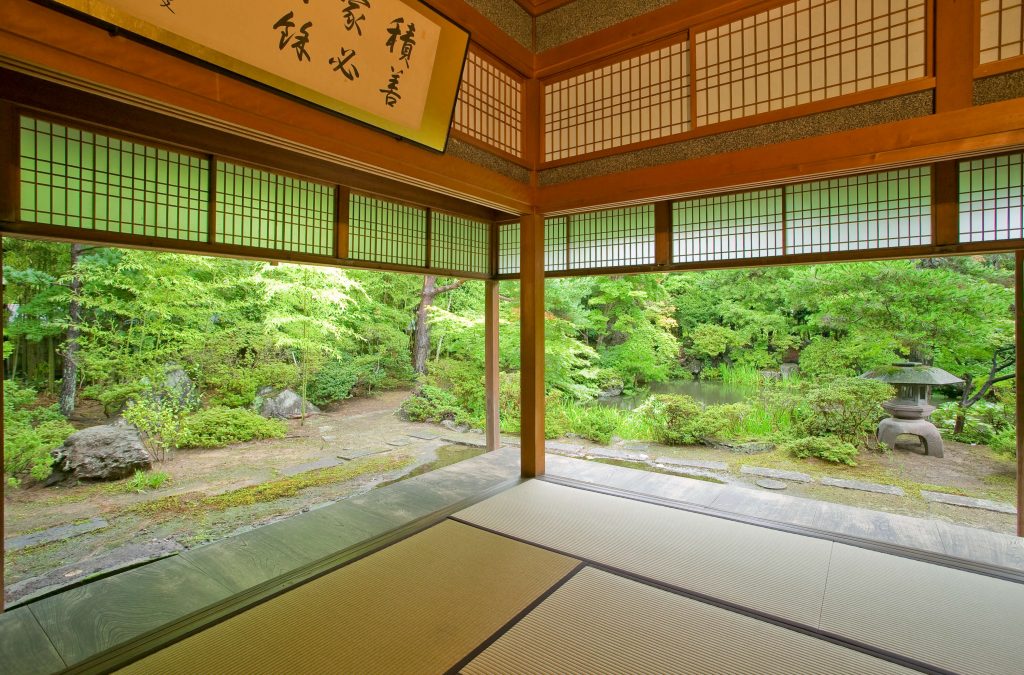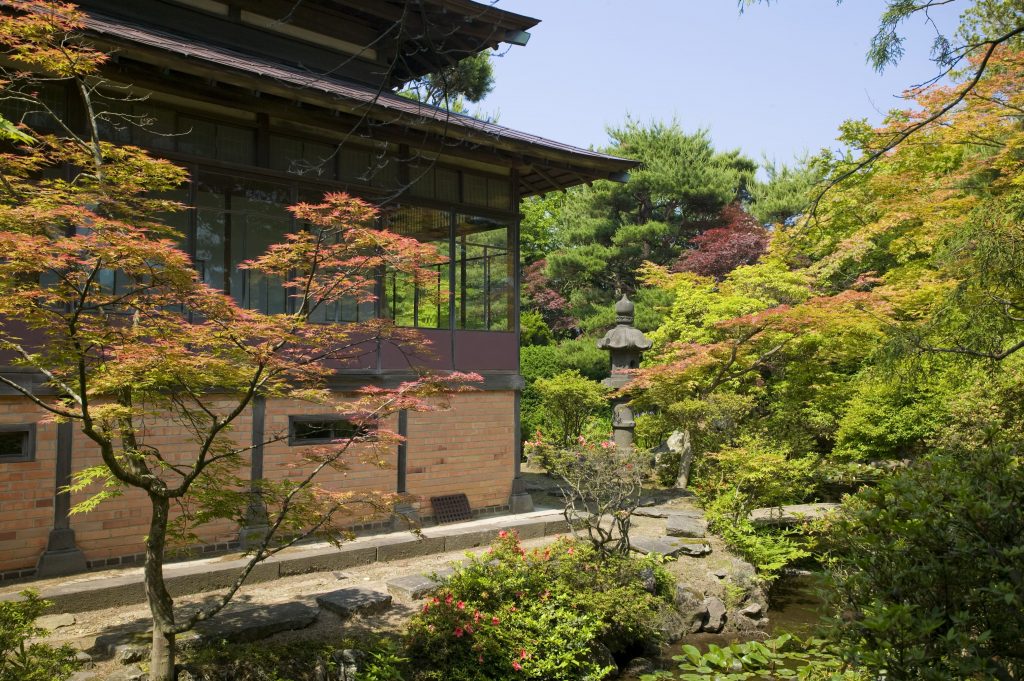Company
Greetings from the President

For more than a century, Kodama Jozo has been producing sake, miso and shoyu (soy sauce), which are the traditional Japanese“fermented” food products essential to our food culture. The generations at Kodama Jozo have developed and nurtured brewing skills to work with microorganisms using ingredients such as rice, soy beans and wheat.
Blessed with abundant clean water, quality local ingredients, ideal climate and natural environment, we are proud to bring Taiheizan sake and Kodama premium miso and shoyu to your tables around the world to enrich your fine dining experience. “Tradition and innovation” have always been our motto and our challenges will continue going forward.
Shinichiro Kodama
Fifth Generation President
Kodama Brewing Co., Ltd.
History
The Kodama brewery was founded in 1879 in picturesque Katagami City, Akita Prefecture, northwest of Japan. Blessed with abundant quality rice and fresh clean mountain water, the generations have nurtured and developed renowned expertise in brewing sake.
Originally, the Kodama family started their business by making soy sauce (shoyu) and miso by Yamakiu ヤマキウ brands for local consumers in Akita. Shoyu and miso are essential basic seasonings in Japanese cuisine and the production of quality “fermented” food products have always been in demand by local communities. The productions of miso and shoyu are still very important parts of Kodama Jozo’s business and as the largest supplier of Akita-style miso in Akita prefecture, we remain strong as multiple awards winning brewery of sake, miso and shoyu to bring quality and joy to your tables.
Kodama Premium Shoyu
Shoyu is consumed every day at home, used widely as necessary seasonings in restaurants, sushi and tempura shops, izakayas and noodle shops in Japan. Kodama koikuchi (dark) premium shoyu is made with soy beans, wheat koji and salted water which are mixed, fermented and matured in Akita cedar barrels for over 1 and 1/2 year to create shoyu. We have been using the same Akita cedar barrels with care for almost 140 years now. Akita, known for its long cold winters, is ideal for low temperature natural fermentations which create umami (amino acid) in shoyu. Kodama premium hand-crafted shoyu is chef’s choice for its distinct complex umami flavor, color, and aroma and it is used widely to dip sushi, to season dashi soup stock, simmer fish, stir-fry meat and vegetables, season grilled meat and salad dressing.
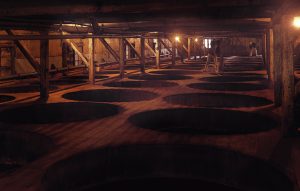
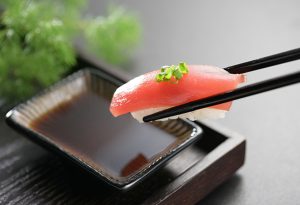
In 1913, Tomokichi Kodama, the second generation of the family business began making sake by the name “TAIHEIZAN” (太平山). This brand name comes from towering mountain in Akita City, Mt. Taihei (“Great Peaceful Mountain”) which for centuries has been the area’s spiritual symbol. Taiheizan Miyoshi Shrine, in Akita City overlooking Mt. Taihei, is still the most visited Shrine in Akita Prefecture for New Year worshipping today.
“Taiheizan” sake achieved its national recognition in 1933 when the Kodama Jozo introduced Japan’s first chilled ginjo sake, TAIHEIZAN-REIRO (太平山 玲琅) which soon after its release became a big hit. The following year in 1934, TAIHEIZAN won the First place at the 14th Annual National Sake Competition out of 5169 contestants. The prize and the popularity of this chilled sake enabled the company to expand its market to Tokyo and to other parts of Japan、making TAIHEIZAN a national brand.
Over the last 30 years, Kodama Brewery has gradually increased its production of pure-rice premium sake such as Junmai Daiginjo, and Junmai Ginjo over Futsushu (regular sake). From around the late 1980s, Japanese food was becoming popular among non-Japanese people overseas, and people enjoyed going to Japanese restaurants and drink sake. Later, European wine competitions included sake in their category, and consequently wine commentators began to write about sake and producers. TAIHEIZAN, which has been a national brand over 100 years in Japan is now available in over 15 different countries including US, Canada, Hong Kong, China, Singapore Australia, Holland and France and its premium sake is enjoyed by many fans around the world.
Akita Kimoto to Taiheizan Kaden Kimoto
The unique characteristics of TAIHEIZAN sake is in its rich texture and complex umami taste with a sharp finish. One of the secrets behind this is in the creation of moto (yeast starter) before main fermentation. Kodama Brewery has developed a modern, modified version of traditional kimoto method, known as the “Akita Kimoto Method” to create strong moto. At the first pole ramming stage of traditional kimoto, steamed rice and koji are normally divided into several vats, but in the modified Akita Kimoto version, a hand-operated electric propelled pole is used to stir and pulverize steamed rice and koji in a vat. This creates a sticky, paste-like anaerobic environment, enabling acceleration of anaerobic bacteria, namely lactic-acid bacteria, to grow naturally without being infected by wild bacteria and germs in the air. The finished strong moto made by this Akita Kimoto style is clean and resistant to cold Akita climate for prolonged fermentations. It is of these long fermentations at low temperatures which create aromatic elegant fragrance and complexity that make premium TAIHEIZAN sakes.
Over the decades since Akita Kimoto was invented in the 1950s, the Kodamas have refined this method with advancements in scientific data analysis, brewing facilities and technology. Within the frame of “Kimoto”, we have tried and succeeded in applying our progressive kimoto style sake in making a wide range of products from Junmai to Junmai Daiginjo. We now call our method “Kaden Kimoto”.
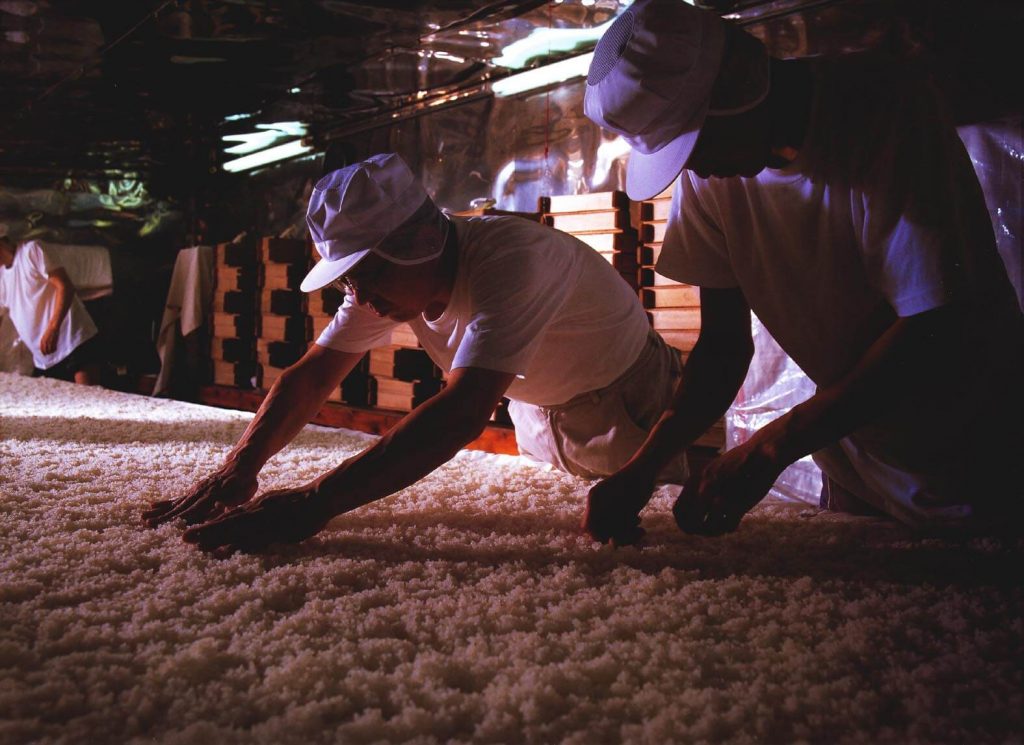
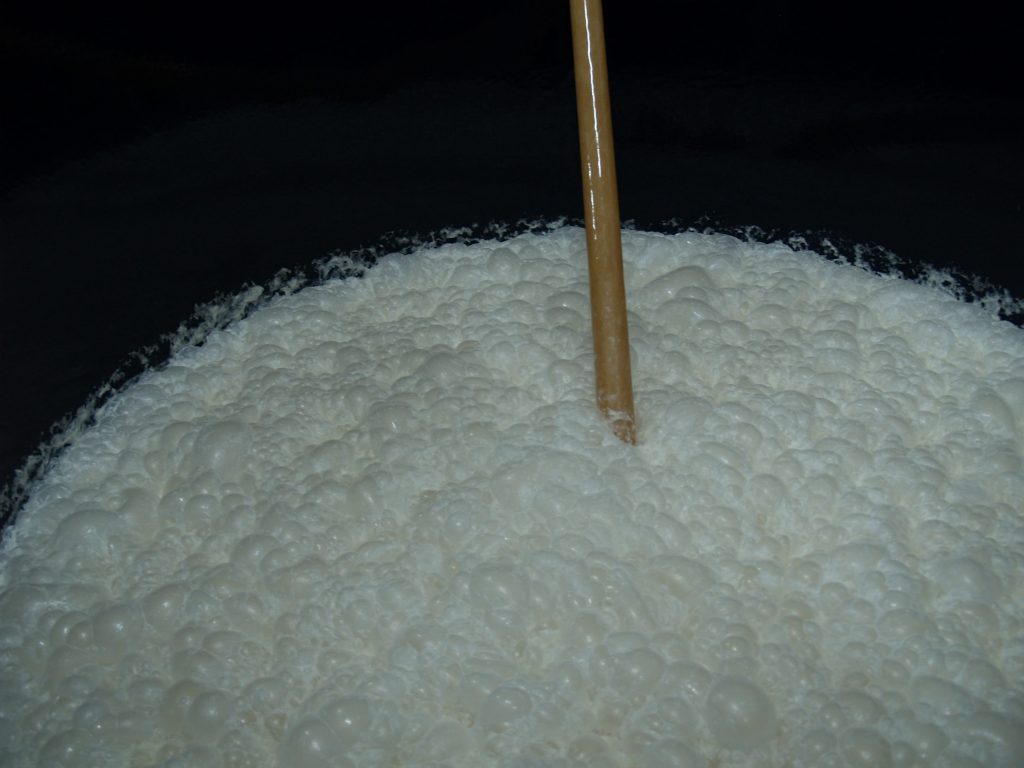
Junmai Daiginjo
“TENKO”
“Incredibly layered sake with more dimensions coming through with each sip”
by Evan Hufford. Advanced Sommelier Co-Founder of Maison Healdsburg, CA
TENKO launched in 1989 as a pioneer of completely hand-made artisan junmai daiginjo brewed with first quality Yamada nishiki rice and local spring water at Kodama Jozo. 1980s were the time when people began to thirst for chilled quality premium sake over generally drank warm regular sake. Making of premium sake requires a lot more manual labor and expertise, but Shin-ichiro Kodama, the 5th generation, determined to gradually shift from massive production of regular sake to more premium sake using “Akita Kimoto” which was iconic of the brewery.
Praised by local and Tokyo markets, TENKO made its grand debut overseas in 2000 by winning Gold in Monde Selection in Brussels, the only overseas competition which had sake in the judging category at that time. Recognitions followed afterwards in the US National Sake Appraisals in Hawaii (Gold 2001-2010 consecutively, Grand Prize in 2017, Gold in 2020, 2021) and Trophy in London’s International Wine Challenge (IWC) in 2009 and Gold in 2017 and 2018.
TENKO is our signature bottle of Kodama Jozo and we are very pleased to announce its 35th Anniversary in 2024 Starting with TENKO40 as “classic”, we have since released Tenko20, Tenko35 and Tenko50 representing the polishing ratios of the same quality Yamada nishiki rice.
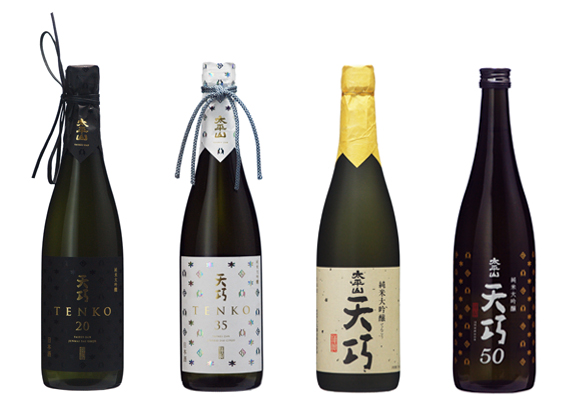
TENKO is on the sake list at Embassies and Consulates of Japan overseas for their receptions and dinners. It has also been served in the First Class and Business Class drinks in ANA international flights.
Recent Developments and New Products
“YOSHINORI OHSUMI”
– Lessons from Yeast –
This special limited brand is made as a commemorative sake for Dr. Yoshinori Ohsumi, the 2016 Nobel Laureate in Physiology or Medicine, for his discoveries of mechanism for autophagy. Autophagy, meaning “self eating”, is a mechanism which exists in human cells but little was unknown until in a series of brilliant experiments in the early 1990s, Dr. Ohsumi identified genes essential for autophagy. Dr. Ohsumi used baker’s yeast in his experiments because its cells are relatively easy to study and can be used as a model for human cells. After years of experiments with yeast cells, Dr. Ohsumi discovered that identical mechanisms operate in human cells which could be identified and studied further to prevent disturbances and disorders of autophagy which linked to Parkinson’s diseases, diabetes and other genetic diseases.
“Lessons from Yeast” are humble expressions by Dr. Yoshinori Ohsumi for his respect for nature and science. This precious Yoshinori Ohsumi label is beautifully designed after an image of a micro-scoped yeast cell. Sake is also an art of mechanisms of natural yeast, where we have learned and continue to learn lessons from its mystery every day.
Dr. Yoshinori Ohsumi, is a professor at the Tokyo Institue of Technology since 2009. This special label was made possible with collaboration with Tokyo Institue of Technology, where it is Kodama Brewery’s President Shin-ichiro Kodama’s alma mater.
For more information on Dr. Ohsumi’s research and the Nobel Prize Award, Please see press release by the Nobel Assembly at Karolinska Institutet.
TAIHEIZAN OMACHI Aged Sake
Taiheizan Omachi is aged sake of the re-production of Taiheizan entry sake which came in the First Place in 1934 National Sake Competitions. There were 5169 entries to the competition that year. The re-production was made possible by using the original recipe and notes and records by Mr. Fujio Oana(1898-1974), a respected bio-chemist and a dedicated researcher from the National Research Institute of Brewing in Tokyo. He had come to Kodama Jozo to supervise and worked with kurabito to create this daiginjo entry sake for the competition during the winter of 1934.

Oana Sensei’s original recipe called for 100% Omachi rice polished down to 40%. To blend two separate moto (yeast starter) batches brewed by sokujo and kimoto, and to use the un-named ambient yeast he had isolated 4 years prior to that year. Reproduction of this historic sake in 2019 with modern technology was an ode to Mr. Oana for his expertise, intuition and tireless challenges to make innovative sake for the industry. Aging over a “period of time” had added more complexities in aroma and taste in this sake which broadened pairing possibilities as after dinner drink.
TAIHEIZAN KIMOTO SHIRAKAMI

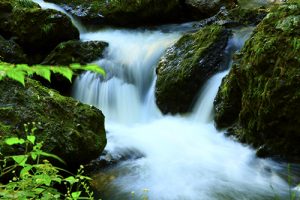
Kimoto Shirakmai was introduced in 2022 using the mountain spring water from the Shirakami mountain range, claimed by UNESCO World Heritage as the largest virgin beech forest (17,000ha) remaining in East Asia. Mountains stretch from northwest of Akita prefecture to southwest of Aomori prefecture.
The essence of this Taiheizan Kimoto Shirakami is in water from the Shirakami mountains, known for its super softness. The Shirakami water has traveled through beech tree trunks, grounds covered and with embedded leaves in this wild forest for centuries. Mysteries are yet to be discovered in this World Heritage wild forest, but by experience, we have learned that sake brewed by Shirakami super soft water matures slowly and is resistant to change in taste over time. Kimoto Shirakami can be enjoyed cold, at room temperature, or warmed with a wide range of cuisine.
Gallery Blue Hole
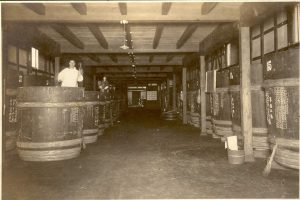
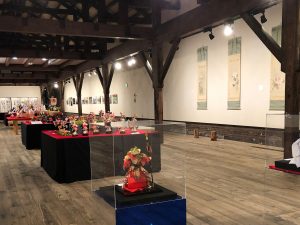
Toji
Our Toji the brew master, Akira Yoneya, leads a team of 9 craftsmen at Kodama Brewery.
「和をもって尊しとなす」 日本酒は一人の力で出来るものではありません。 蔵人それぞれが、持ち場で最善を尽くし一体となって清酒と造り上げるのが「和醸良酒」。 これからも「和」を大切に良い酒を醸して行きたいと思っています。
杜氏 米谷 央
I like the ancient Japanese proverb “Harmony is the greatest virtue” 和をもって尊しとなす. As a sake brewer, ”harmonious teamwork makes quality sake” 和醸良酒 is what our team has always valued. Our challenge continues.
by “Toji” Akira Yoneya
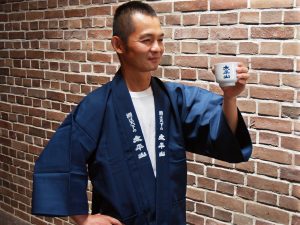
The Kodama Family Residence – An Important National Cultural Property
The Kodama family has proudly preserved its traditional family home built in 1923. A large residence sits on 4,550 square meters of land located a short walk from the brewery and nearby are the smaller houses built for extended family members. The residence consists of the main house and storages for household furnishings, rice (in the old days) and a bricked garage for cars and tools. A beautifully lush Japanese koke (moss) garden is highlighted by a pond surrounding two sides of the main house with pine trees and flowers. The Kodama residence is now a fine example of late Meiji to Taisho era (late 19th Century to early 20th Century) rural architecture and displays how owners of breweries of early modern Japan’s rural society lived. Five generations of the Kodama family lived here and hosted numerous important guests from in and outside Japan. The Japanese government declared the Residence and its garden as Important National Cultural Property in 2008.
